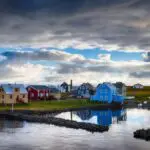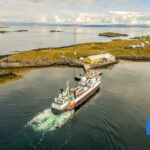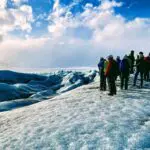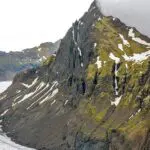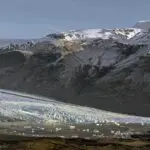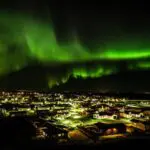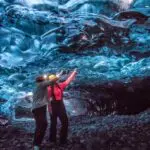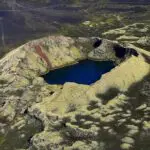Just under an hour’s drive from Reykjavik to the west, you will find the country’s largest fjord: Hvalfjörður. The name means Whale Fjord, and while there are no official explanations as to why the fjord has that name, the folktale Redhead tells a good story.
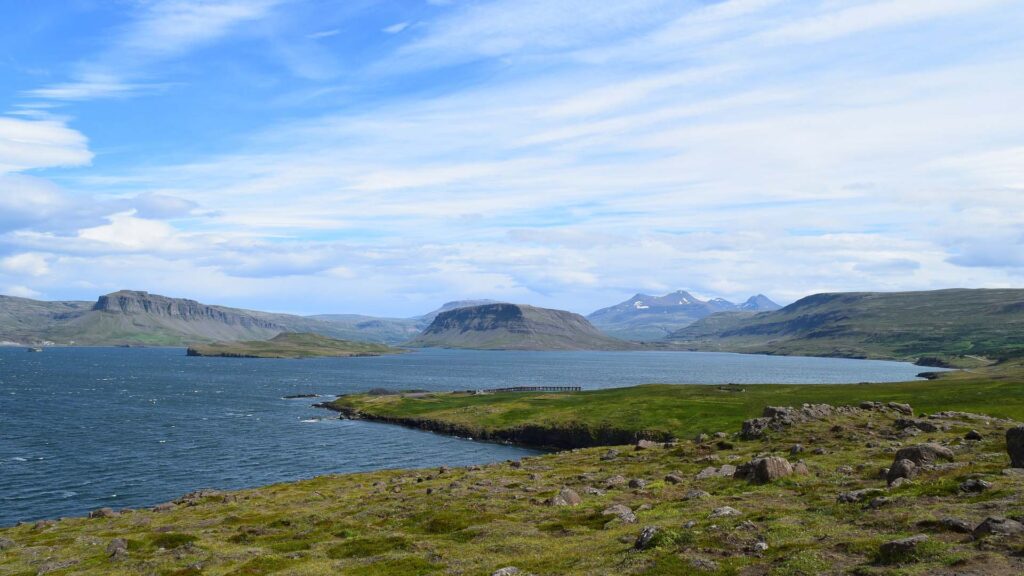
It tells the tale of a man who betrayed an elf woman and was cursed to become a fierce whale. It lived in Hvalfjörður. You can read Redhead here.
One theory of the name is that early settlers encountered a pod of whales trapped in the fjord and ended their life by being beached. Beached whales were a godsend for people, and the Icelandic word “hvalreki” both means whale beaching and windfall, says it all. However, no sources exist that support this theory.
Hvalfjörður used to be a part of the Ring Road. If you wanted to go to Akranes, Borgarnes, or even Akureyri, you had to take the 62km detour around the fjord to get there. In 1995 the Hvalfjarðargöng Tunnel opened and made traveling much easier for people in West and Southwest Iceland.
The History of the Fjord
Hvalfjörður seems to have been settled early on, which should not come as a surprise as Reykjavik and nearby Kjalarnes were some of the first places to be settled. Nearby, Akranes and Borgarfjörður were also settled early on.
Hvalfjörður is the setting for Harðar saga og Hólmverja. It tells the story of the outlaw Hörður Grímkjelsson and his companions (Hólmverjar) in the latter half of the 10th century. Hörður and his friends travel to Norway and Götaland, where Hörður marries Helga. When they arrive in Iceland after 15 years away, they settle down in Hvalfjörður.
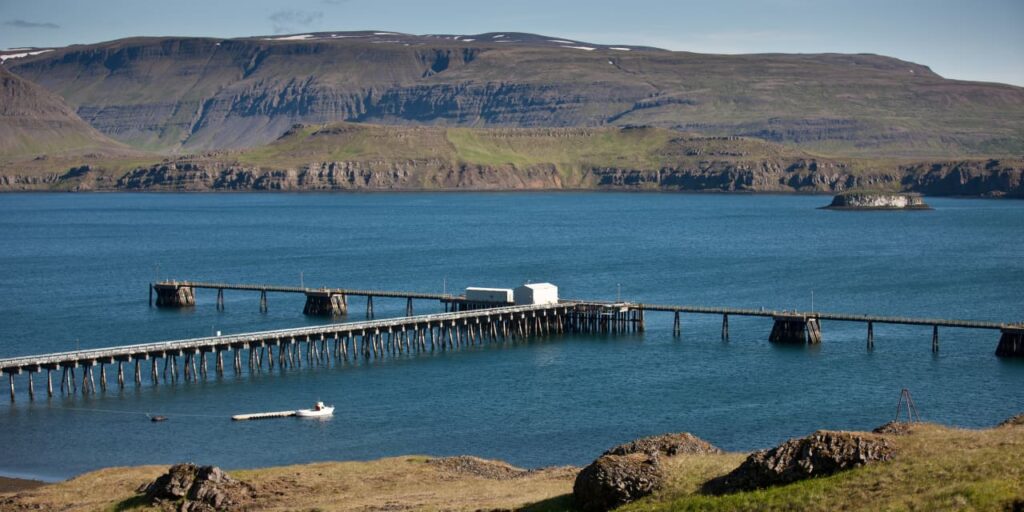
One of Hörður’s companions is charged with murder and Hörður by proxy, which makes them outlaws. Hörður and his friends move to the islet Geirshólmi in Hvalfjörður, where other outlaws from across the country subsequently joined them. They form a band of outlaws called Hólmsmenn (Islanders).
When many of the men had been killed, Hörður’s wife, Helga, swam to land with her two sons. The small bay where the islet is is called Helguvík. Helgusund (Helga’s Channel) is where she reached land, and the mountain pass on Mt. Þyrill, which she climbed with her sons, is Helguskarð or Helga’s Pass.
Then during the age of the Sturlungs, another large group of people lived on the islet, and they pillaged the nearby countryside.
It is a little bit hard to believe that a group of almost 200 people lived on that small islet, but who are we to doubt the Icelandic sagas?
Farmers have lived in the beautiful fjord for centuries.
Bjarteyjarsandur Farm
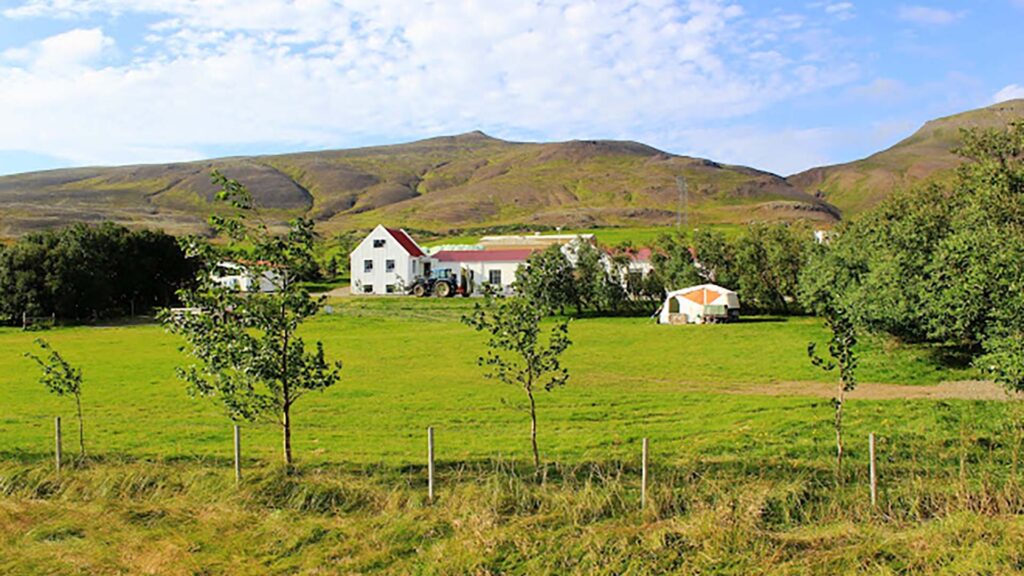
On the northern side of Hvalfjörður is the farm Bjarteyjarsandur. They are sheep farmers and have a wide variety of operations, tourism, and educational activities. You can buy various products directly from them, such as vegetables, lamb meat, wool products, honey, and jams. It is also possible to book accommodation through them. You can either camp on their grounds, rent a summer cabin or book a room in their house.
It is possible to book a visit with them to see the sheep sheds and guided walking tours in Hvalfjörður.
Whaling in Hvalfjörður
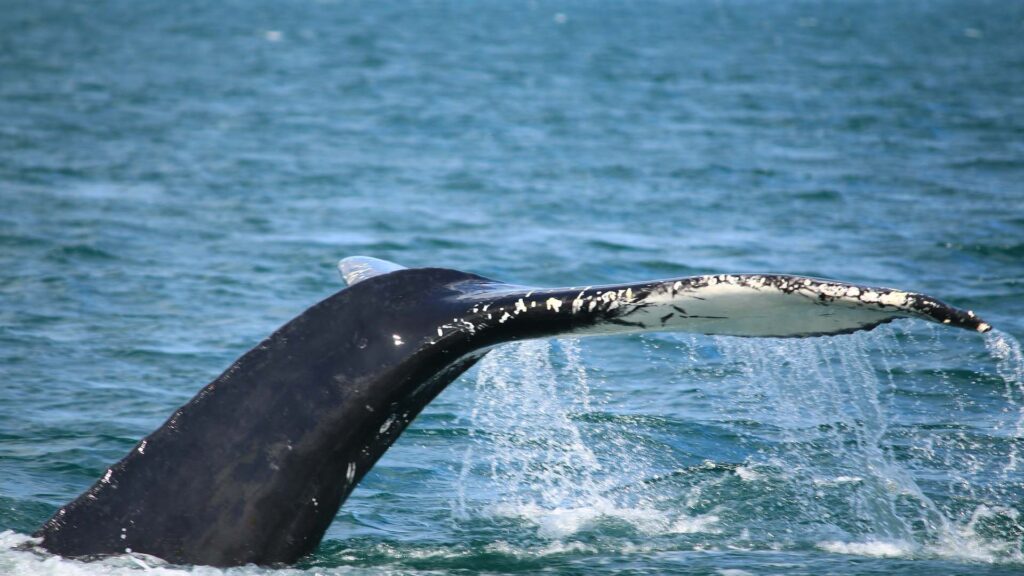
Despite the name, there usually aren’t any whales in the fjord, and definitely, no whaling is done there. But there is a whaling station. The station was erected in 1948 and was the only one in the country at the time. Norwegians had erected whaling stations in the West and East fjords some decades before, but they were not in use.
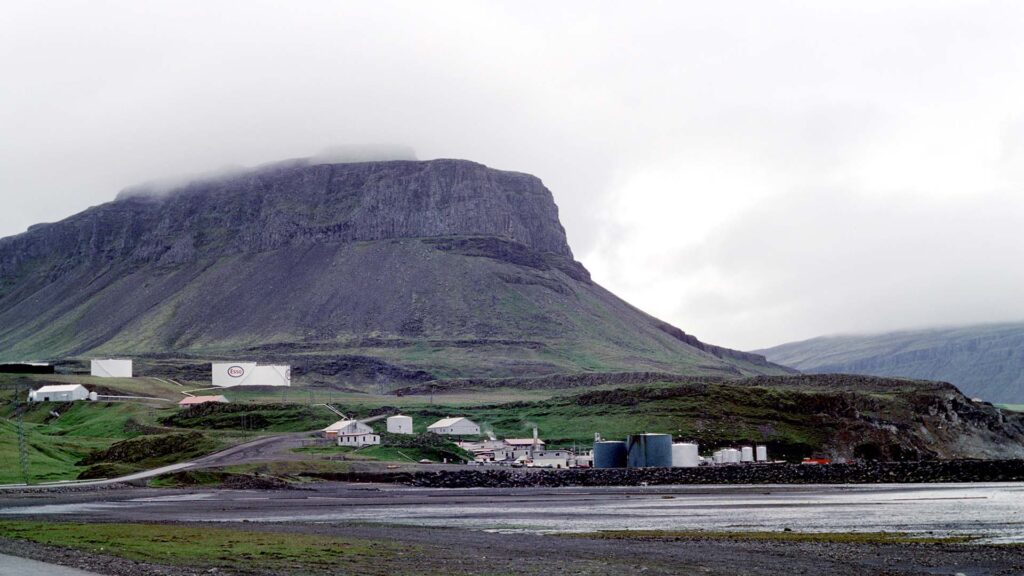
The whaling station in Hvalfjörður was erected where the US military had constructed a military base where they kept their oil supplies. The whalers chose this location as the Allies had already built a bridge, barracks, and other houses that the company could use.
Whales were processed in the station every summer, from Whitsun until mid-September, for the next few decades. When it was the busiest, about 100 people worked there. They processed about 300-400 finback and sei whales every summer. The station was in operation until 1989. However, it was reopened in 2009.
Hvammsvík Baths
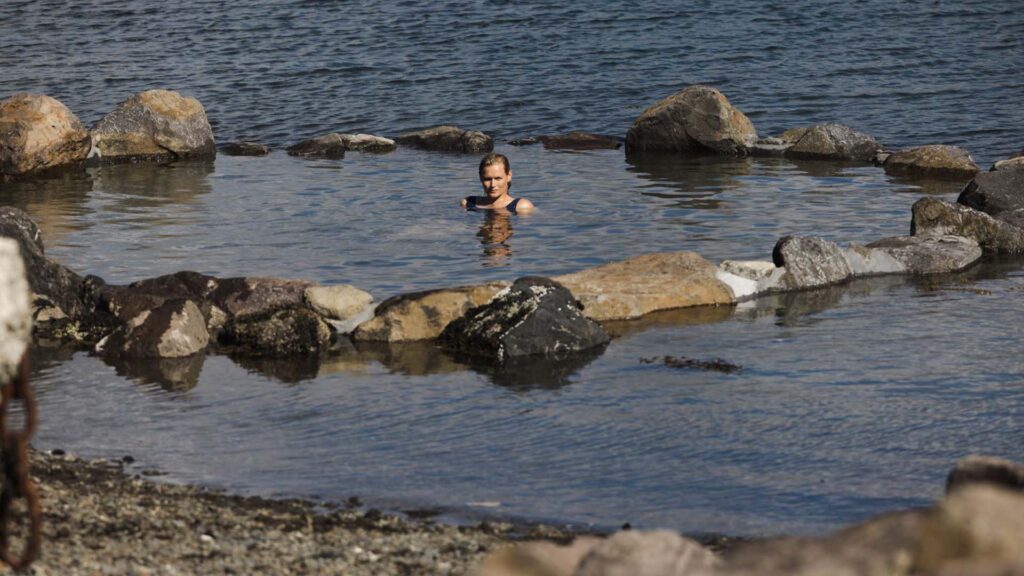
The newest attraction in Hvalfjörður is Hvammsvík Baths. The site has eight natural hot springs of varying temperatures, situated along the shoreline and merging with the ocean. The sea baths are only 45 minutes from Reykjavik city center by car.
You can do much more than soak in the natural hot springs, even though that is the main attraction. You can go sea swimming, stand up paddle boarding, there are often concerts there and if you come at night in the wintertime, there’s a chance you might see the beautiful Northern Lights.
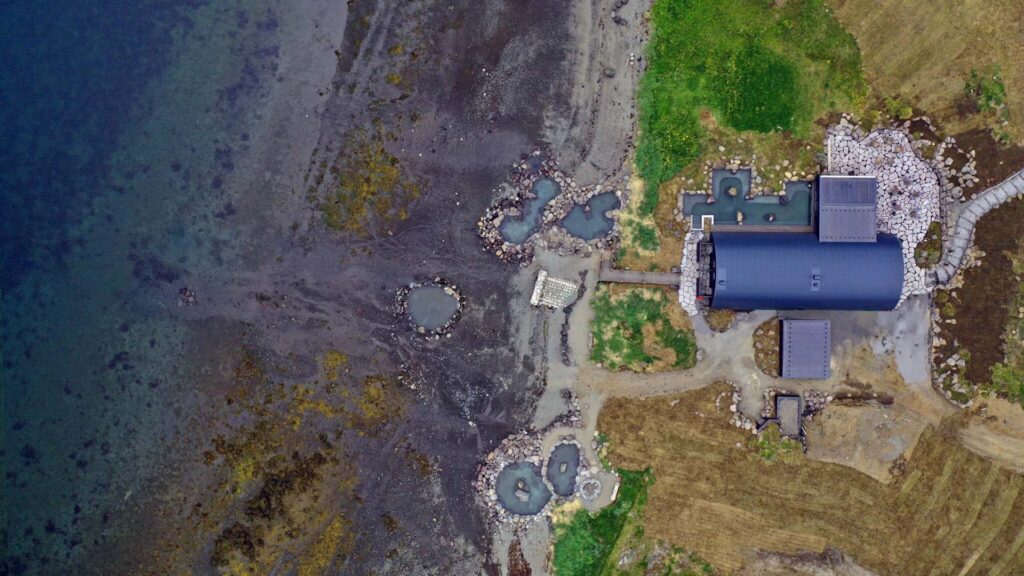
For those who don’t want to leave, Hvammsvík Nature Resort offers four private houses. The ocean, meadows, black beaches, and mountains surround them. They’re both rustic and include all modern conveniences.
War and Peace Museum
The War and Peace museum in Hvalfjörður traces the unique and exciting history of the Allied occupation of Iceland between 1940 and 1947. The occupation transformed the peaceful countryside of Hvalfjörður into a setting for world events. The museum includes an elaborate collection of monuments and memorabilia related to the history of the occupation in Hvalfjörður.
The British were first to come to Iceland on May 10, 1940, but the US took over a year later on May 28, 1941. The museum displays various subjects about the occupation, such as children and toys, nursing, convenience store, The Icelandic Coast Guard, security and defense, barber shop, Russia, Nazi Germany, Britain, and the US.
Between August 29 and May 26, the museum is only open to group bookings. Between May 28 and August 28, it is open Friday-Sunday between 11:00 and 17:00.
Salmon and trout fishing
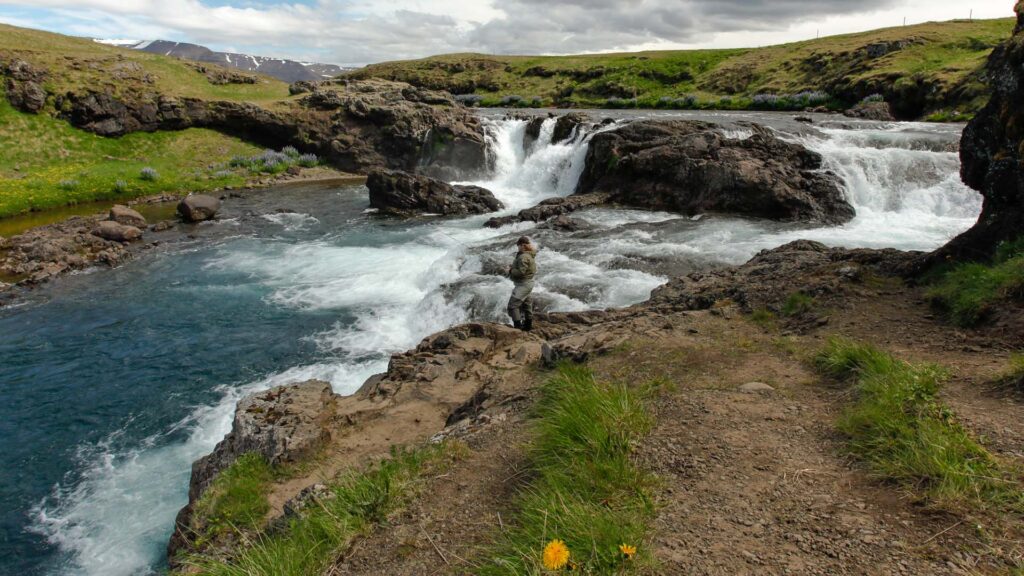
Hvalfjörður and the surrounding area have good natural resources. There are quite a few places to fish both salmon and trout.
In Svínadalur Valley, you can fish in Eyrarvatn Lake, Þórisstaðavatn Lake, and Geitabergsvatn Lake. Then it is possible to fish in Laxá in Kjós, Laxá in Leirársveit, Brynjudalsá, Botnsá, and Leirá in Leirársveit.
You can check out information on those places here and here, but as there is no English option, you must let Chrome translate for you.
Waterfalls in Hvalfjörður
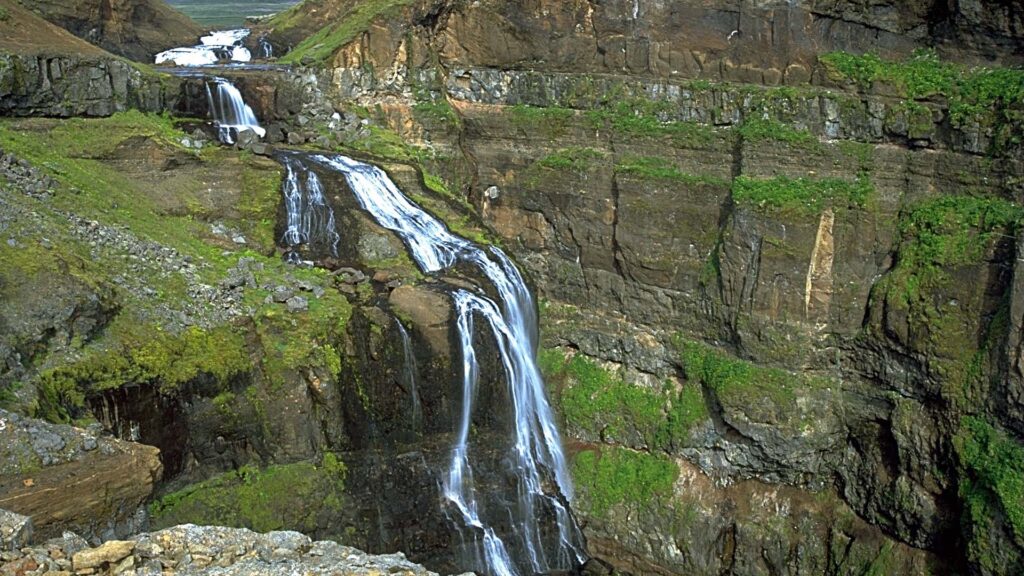
The most famous waterfall in Hvalfjörður is Glymur. The waterfall was the highest in Iceland for decades, but a new higher waterfall was found at Kárahnjúkavirkjun Power Station in East Iceland.
Glymur flows from the Botnsá river. Botnsá River is one of the salmon rivers mentioned above. It and the waterfall play a pivotal role in the folktale Redhead. The river runs from Hvalvatn, one of Iceland’s deepest lakes.
The waterfall is not easily accessible, and you must hike for 3-4 hours to reach it. The valley has a parking lot and good walking paths to the waterfall. The view is better from the south side, and most people do that walk, marked with yellow painted stones.
Despite good walking paths, people will need to be in reasonable shape for the hike, as there are steep slopes and possible gravel landslides.
Bird lovers can see fulmars nesting in the canyon in the summertime.
Hvalfjörður’s Nature
On the south side of the fjord, on the other side of Mt. Esja, is the municipality of Kjós. There is quite a large summerhouse area, and some are rented out to tourists. If you search for Kjós or Kjósahreppur on Airbnb, you will find a few houses to rent.
In Kjós are two different rivers, both named Fossá (Waterfall River), then the sizeable Laxá in Kjós (salmon river) is there as well. The summerhouses are mostly scattered around the beautiful Meðalfellsvatn lake.
The innermost part of the fjord has a mixture of volcanic mountains and green vegetation in the summertime. Lupine is common by Botnsá River, and there is also a small forest of birch and conifers.
Northern Lights in Hvalfjörður
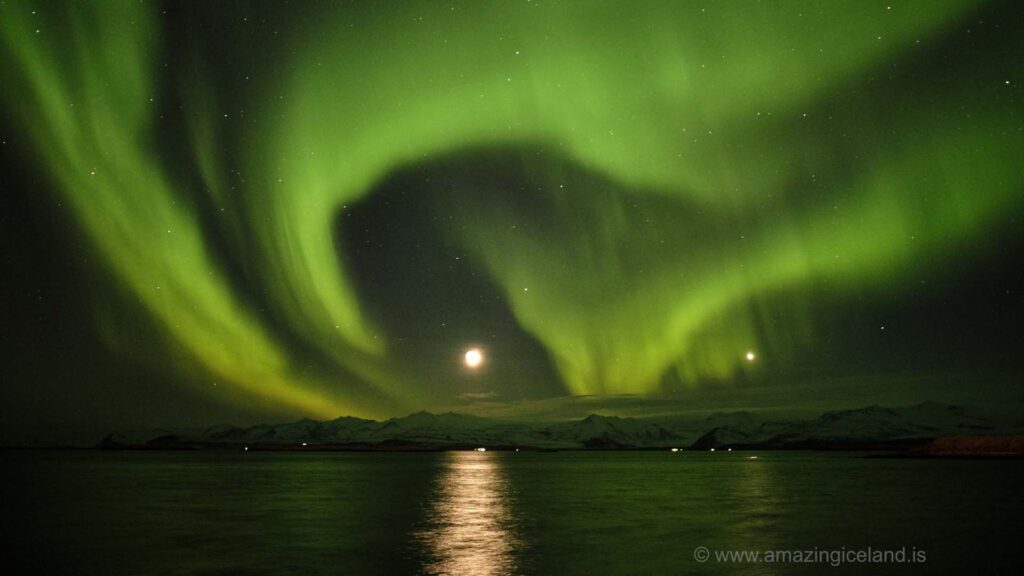
There are few streetlights in Hvalfjörður, so it can be a great place to see the Northern lights without going far out of the city. We recommend you check the website of the Icelandic Met Office for the forecast to see if there’s a chance of seeing them there.
Please signup HERE for our newsletter for more fun facts and information about Iceland!

